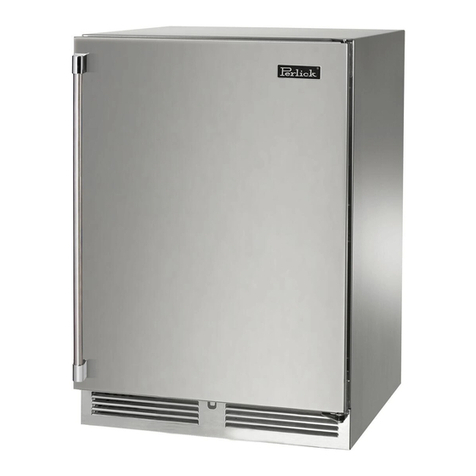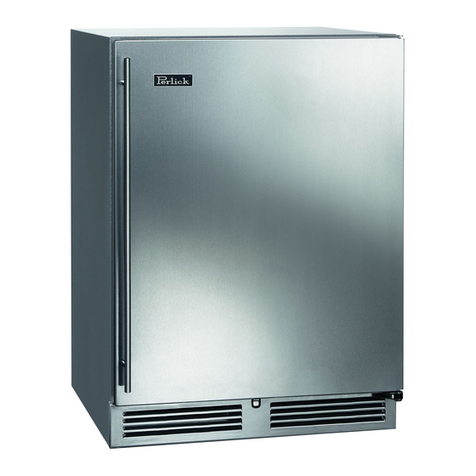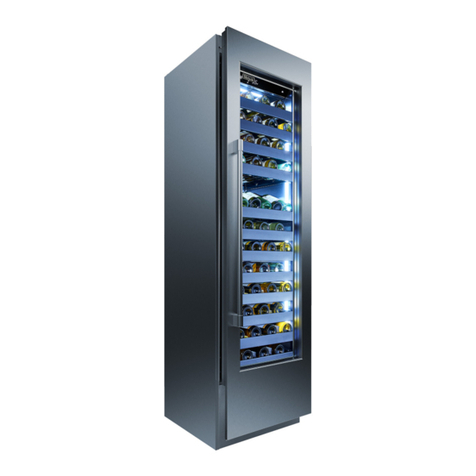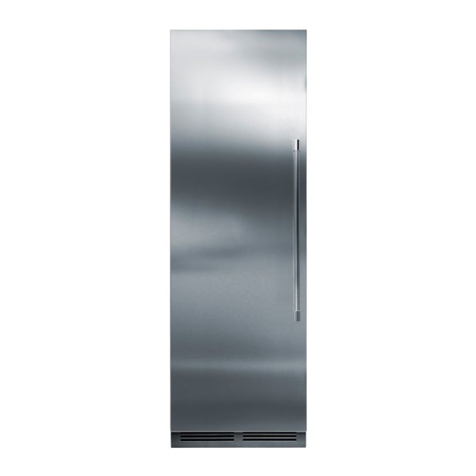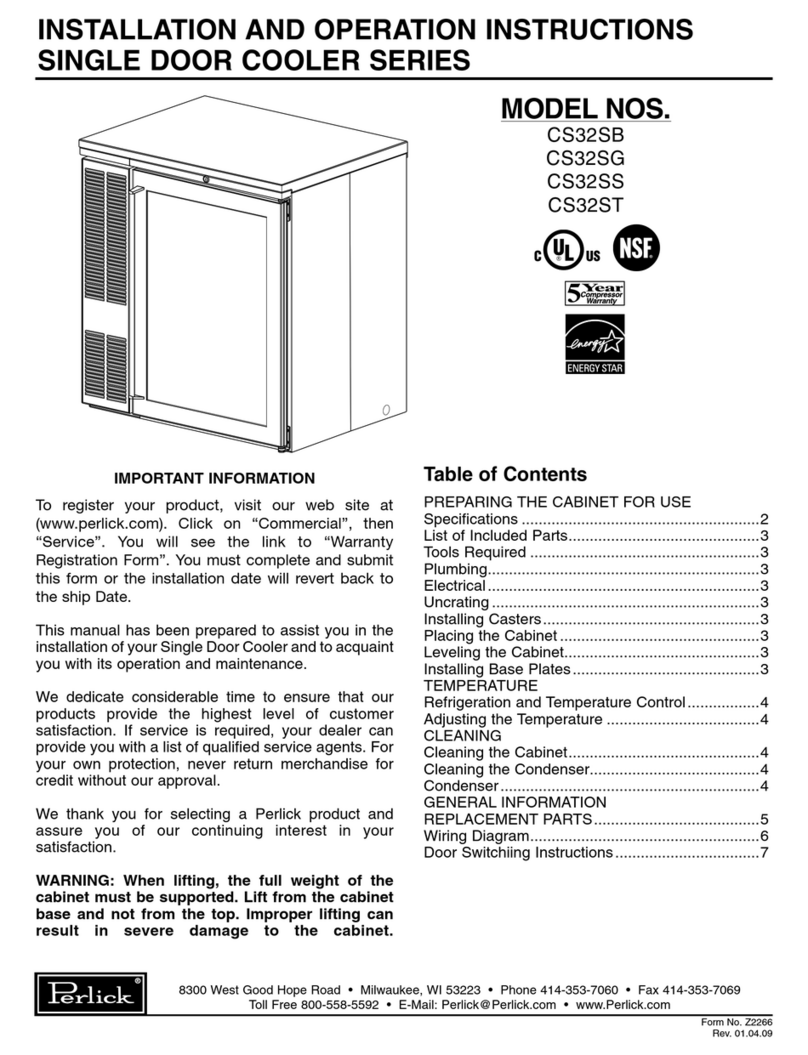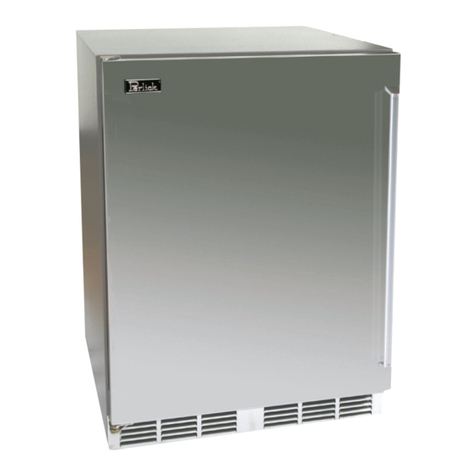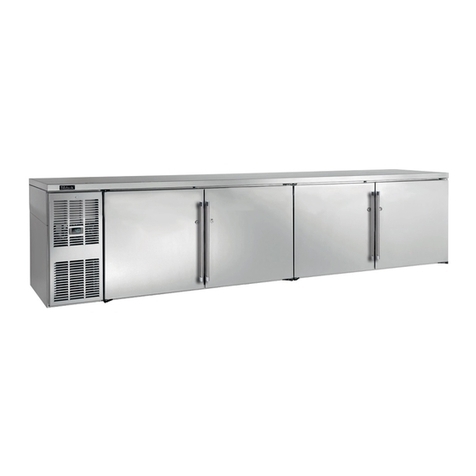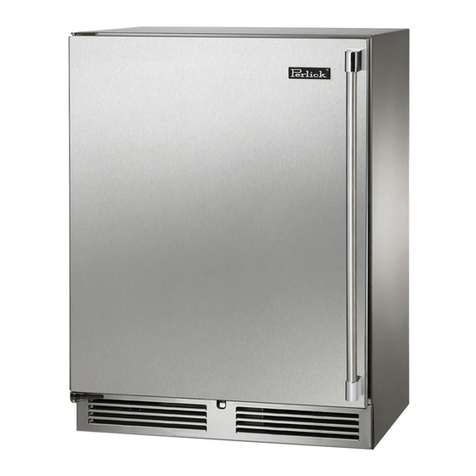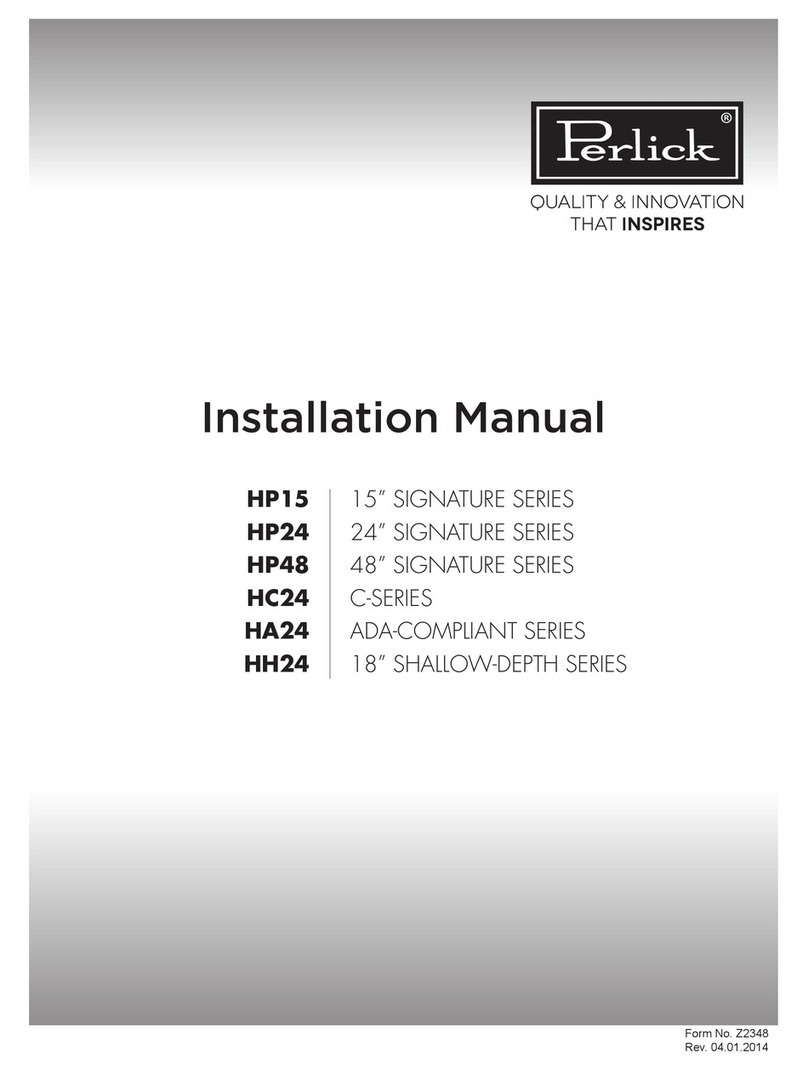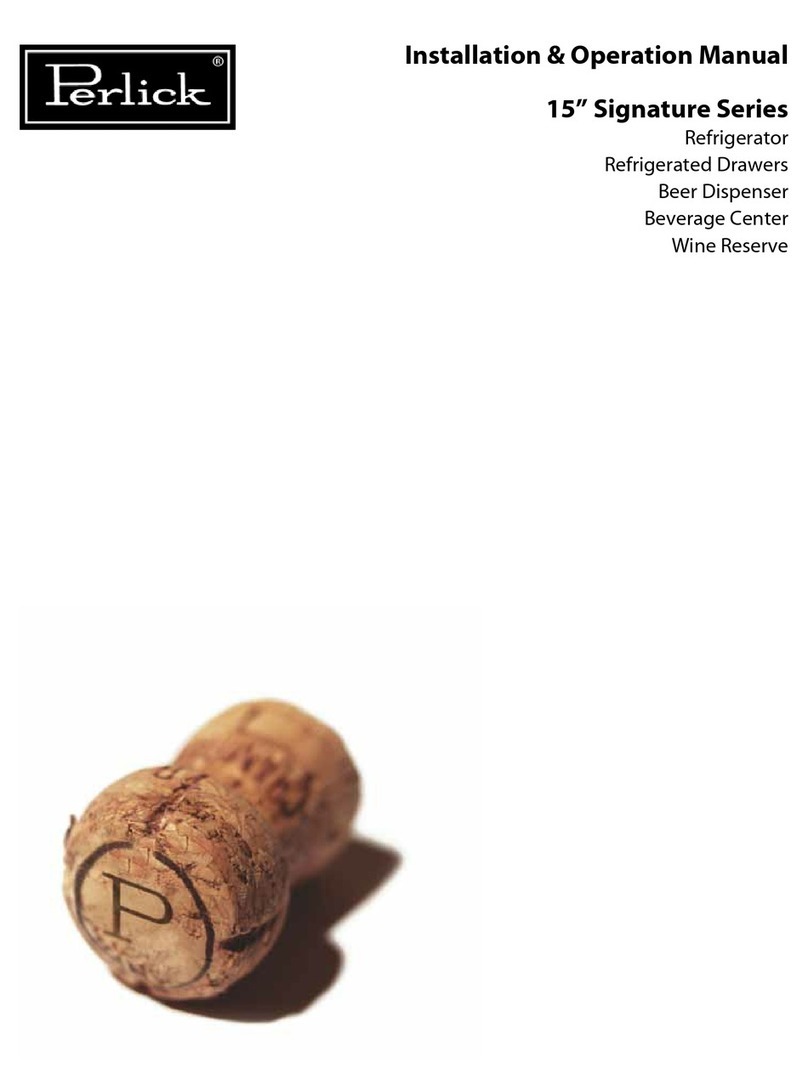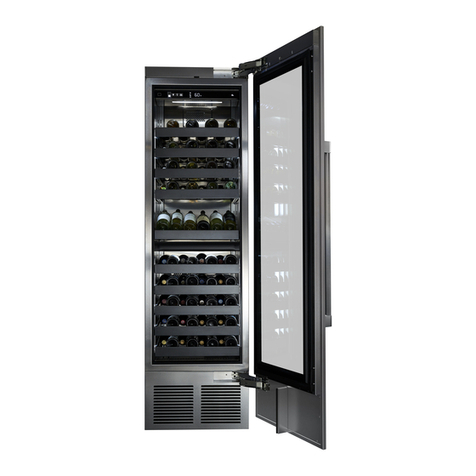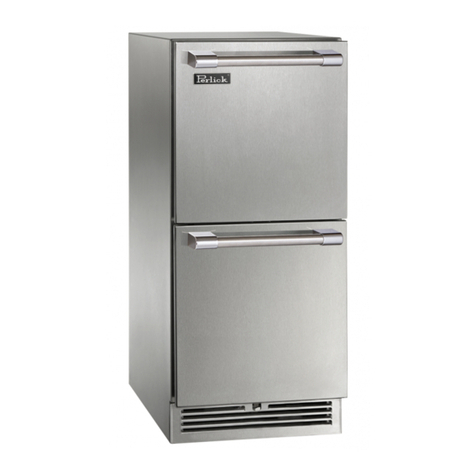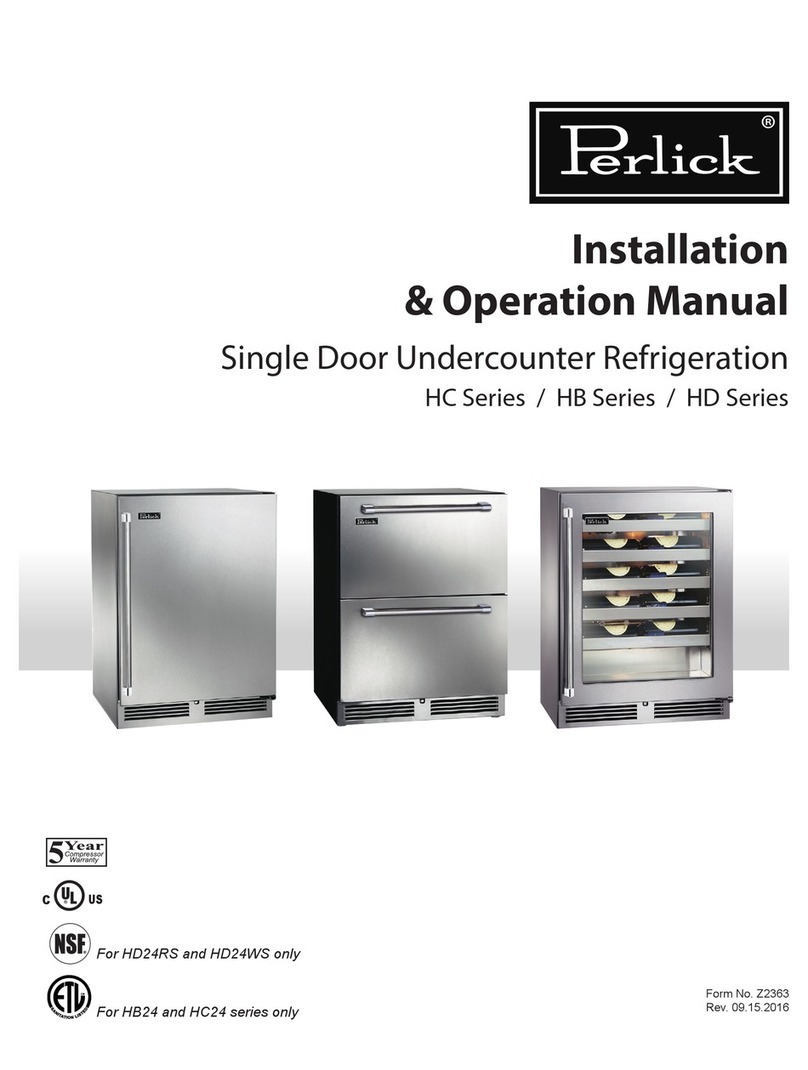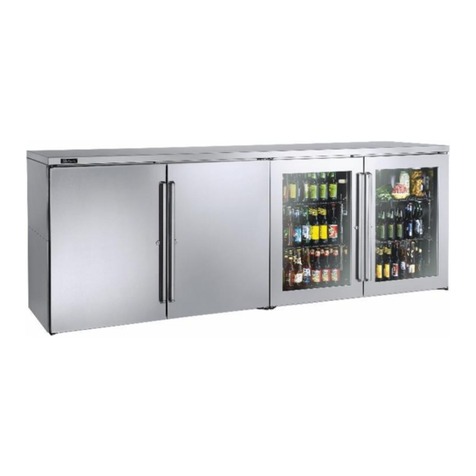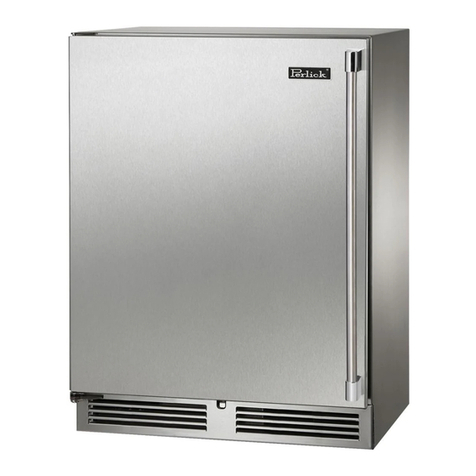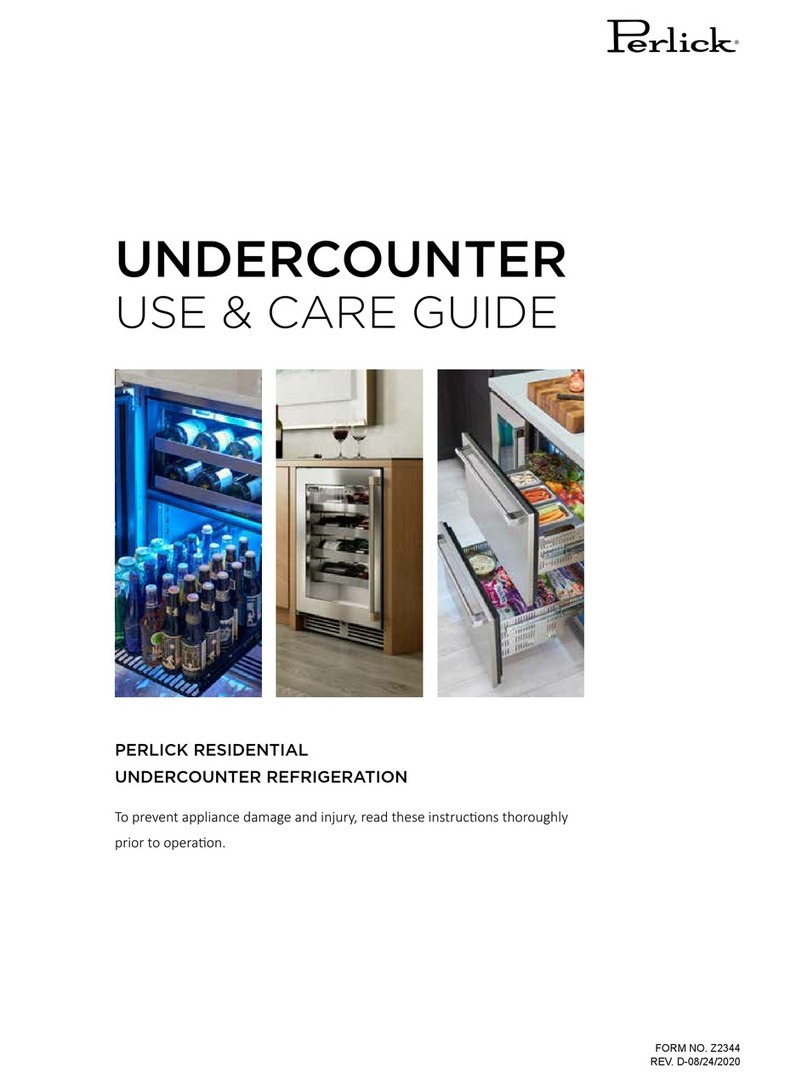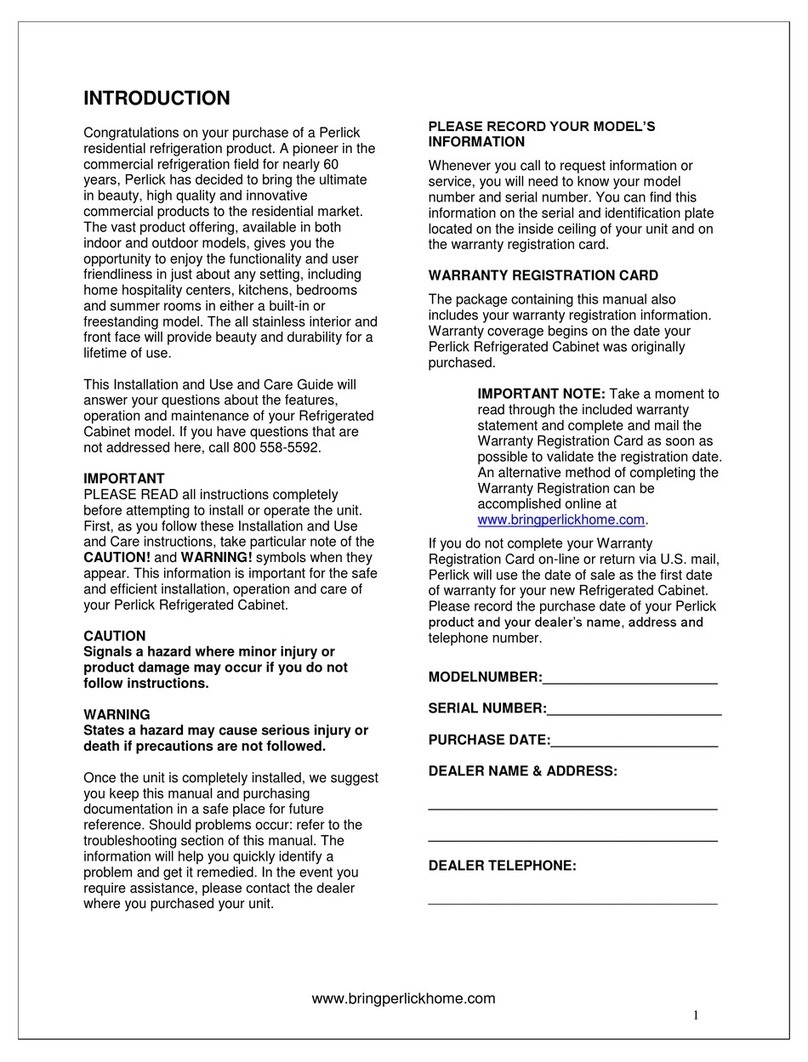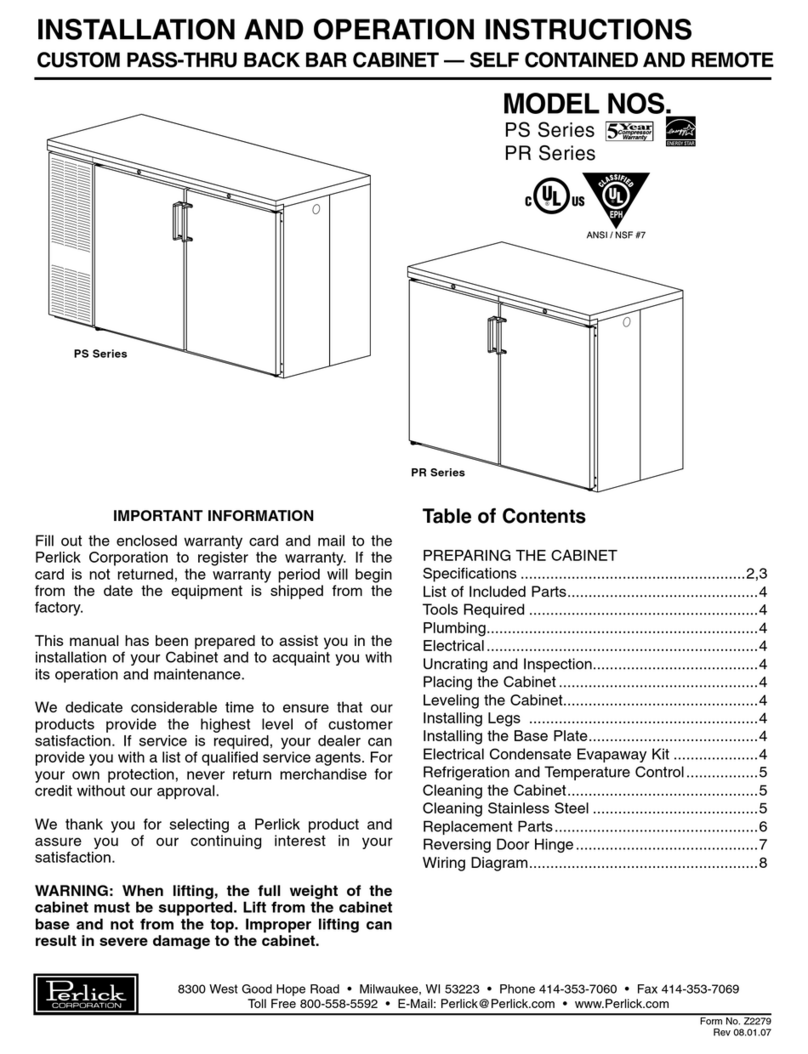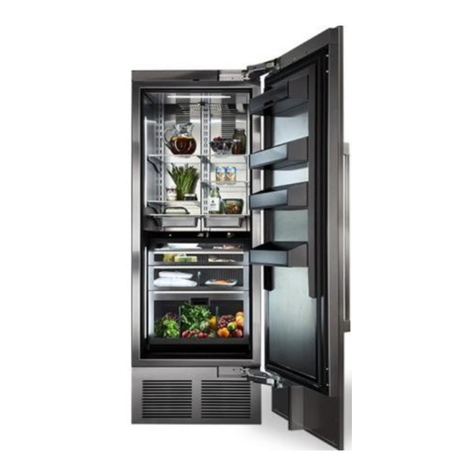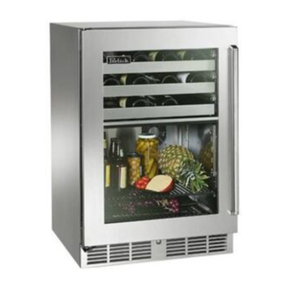
9 Return to Table of Contents
Back Bar Operation Installation Manual
Pre-service Safety Check
It is strongly recommended that all service
techniciansreceivetrainingonthespecic
equipment,procedures,andhandlingofammable
refrigerants before conducting product service.
• Use a combustible gas leak detector
to perform a background check and
monitoring around the appliance.
To avoid a risk of injury, do NOT use leak
detectors with an arc or spark module to
check for leaks in and around appliances that
use A2L or A3 refrigerants. The leak detector
mustbecertiedforusewiththespecicrefrigerant
classbeingserviced.Ifammablerefrigerantis
detected, immediately ventilate the room, evacuate
the area, and notify the owner or customer. Recheck
with a combustible gas leak detector before
proceeding.
• Review the Safety Data Sheet (SDS) for the
refrigerant listed on the appliance’s ID Plate.
Because, some refrigerants and compressor
oils may cause frostbite and others may
cause chemical burns, use Personal Protective
Equipment (PPE) such as, protective gloves,
eyewear, etc.
• Ensure a dry-powder re extinguisher rated
forClassBresisaccessibleonsite.Technicians
shouldbetrainedintheuseofthesere
extinguishers.
• Utilize a tubing cutter, not a torch or
otherheatedsurfacetoolduetoammable
refrigerants.
• Conduct all servicing in a well-ventilated
area. Whenever possible, open a window, door
or other means to ventilate the area. Take extra
careiftherepairworkisdoneinaconned
space, including providing enhanced ventilation
topreventformationofammableatmospheres.
Before repair work is performed, take these
steps to ensure that no ignition sources are
present:
• Check the area for obvious sources of sparking or
openames.
• Ensuretheareaisfreeofopenameorburning
materials, including cigarettes, candles, or similar
materials.
• Do not operate appliances that utilize open
ames,igniters,orhavehotsurfaces(for
example: electric or gas ranges, electric or gas
dryers, toasters, and other small appliances)
while servicing the appliance.
• Inform the owner/consumer that no open ignition
sources should be present in or near the area,
including cigarette smoking materials.
• Check the area and the appliance for abnormal
signs of ignition or melting of components that
might have occurred prior to the service call.
If there are signs of these situations, stop and
contact the manufacturer before conducting
service.
• Maintain a safe zone around the appliance during
service work to prevent introduction of ignition
sources or entry by the customers.
• If the appliance is being moved to a service
center, take care to prevent damage to the
appliance, especially the refrigerant lines.
• Utilize vacuum pumps, recovery equipment, and
othertoolsthatareratedforandcertiedforuse
withA2LorA3ammablerefrigerants.Vacuum
pumpsmustbecertiedfortherefrigerantbeing
used. Service companies/technicians should
consider, where appropriate, the use of spark-
proof tools as an additional measure of safety.
Leak Detection and Coolant-line Repair
• Never use potential sources of ignition, open
ame,chargingwithammablerefrigerants,
or hot surface tools to detect the presence of
a leak. Use soap-bubble testing when charging
with oxygen-free dry nitrogen (OFN/OFDN), and
acertiedandcalibratedcombustiblegasleak
detector to test for leaks if the system is charged
with an A2L or A3 refrigerant.
• After repair, check for any vented refrigerants
with a combustible gas leak detector. If a leak is
detected or if the coolant lines must be repaired,
replaced,orlled,strictlyfollowallinstructions
provided by the manufacturer.
